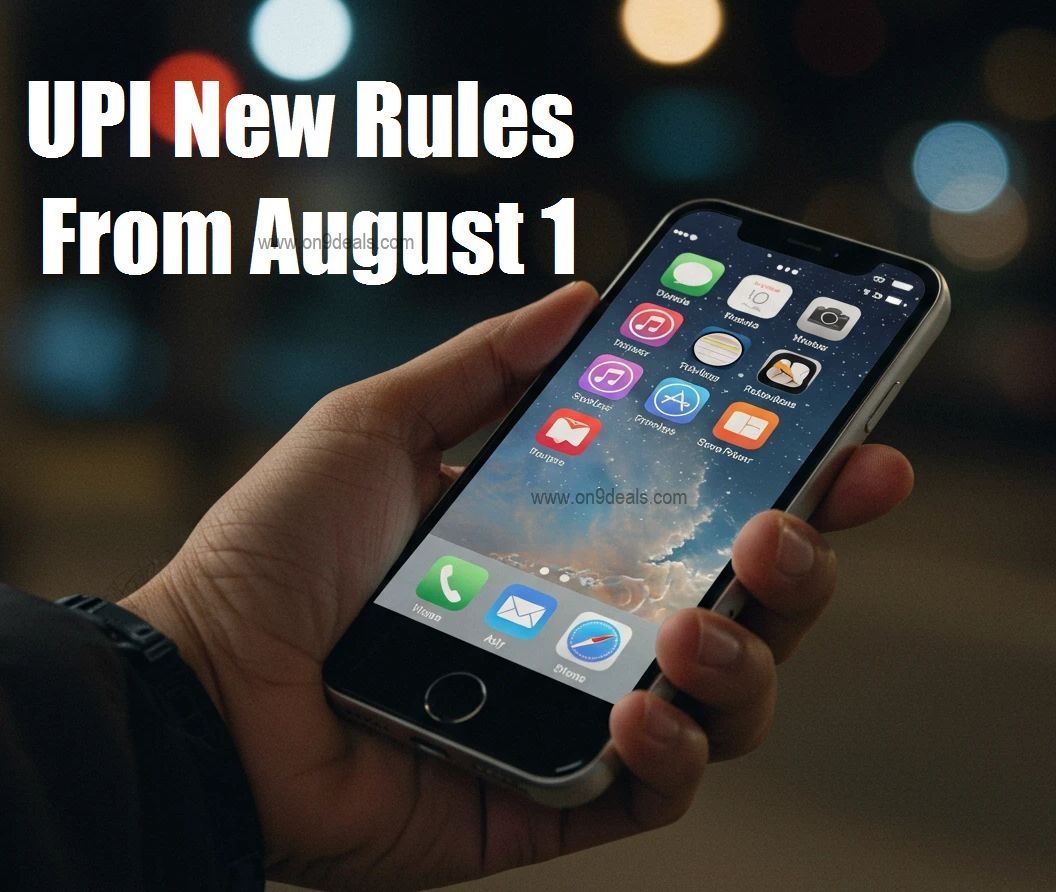India’s Unified Payments Interface (UPI) has revolutionized digital transactions, making everyday payments seamless and instantaneous. However, with its exponential growth, the National Payments Corporation of India (NPCI), the governing body behind UPI, continuously works to enhance its efficiency, security, and stability. Effective August 1, 2025, a new set of regulations is set to come into force, impacting how users interact with their favorite UPI apps like Paytm, PhonePe, and Google Pay, particularly concerning daily balance checks, autopay mandates, and API usage. While these changes aim to optimize the system, it’s crucial for millions of users to understand their implications.
The Rationale Behind the Changes
The UPI ecosystem processes billions of transactions monthly, leading to significant load on the system, especially during peak hours. Frequent server outages and transaction failures observed in recent months have highlighted the need for stricter controls. The NPCI’s new guidelines are primarily designed to:
- Reduce System Load: By limiting non-financial API calls like repeated balance checks, the burden on UPI servers can be significantly reduced, leading to faster and more reliable transactions.
- Improve Efficiency: Streamlining processes like autopay execution and transaction status checks will enhance the overall performance of the UPI network.
- Enhance Security: While not a primary focus of these specific August 1 changes, NPCI consistently introduces measures to bolster security, and optimizing API usage contributes to a more robust system.
- Prevent Misuse: Placing limits on certain functionalities can help prevent potential misuse or system exploitation by automated scripts or malicious activities.
Key Changes Effective August 1, 2025
The new rules primarily target the underlying API interactions between UPI apps and banks, but their effects will be felt by end-users in specific scenarios:
- Cap on Daily Balance Checks:
- New Rule: Users will now be able to check their bank account balance a maximum of 50 times per day per UPI app within a rolling 24-hour period.
- Impact on Users: For most casual users, this limit will be more than sufficient. However, individuals who frequently check their balance after every small transaction or businesses that use UPI for numerous micro-transactions and constantly refresh balance status might need to adjust their habits. Repeated attempts beyond the limit will result in the temporary blocking of this feature.
- App Responsibility: UPI apps are mandated to have mechanisms to limit or stop balance enquiry requests during peak hours if needed, to reduce system load. Issuer banks are also required to include the available account balance in the confirmation message after every successful UPI transaction.
- Limits on Viewing Linked Bank Accounts:
- New Rule: The ability to view the list of bank accounts linked to a mobile number through a specific bank in the UPI app will be restricted to 25 requests per customer per app per day (on a rolling 24-hour basis).
- Impact on Users: Similar to balance checks, this aims to curb excessive API calls. Users who frequently switch between multiple linked accounts or view their linked accounts repeatedly may notice this limit. Requests should only be made after the customer explicitly selects their bank. If the account list fails to load, retries will require customer consent.
- Fixed Time Windows for Auto-Debit (Autopay) Mandates:
- New Rule: Auto-debit payments, such as recurring subscriptions (OTT, music streaming), utility bills, or EMI deductions, will now be processed only during non-peak hours.
- These fixed time slots are generally:
- Before 10:00 AM
- Between 1:00 PM and 5:00 PM
- After 9:30 PM
- These fixed time slots are generally:
- Impact on Users: While you can still set up or cancel autopay mandates at any time, the actual execution of the debit will be restricted to these specific windows. This means that if a subscription is due at a time outside these windows, it will be processed during the next available slot. This is a behind-the-scenes change designed to reduce congestion during peak transaction periods. There is a limit of one initial attempt and up to three retries per mandate, meaning a total of four attempts for a single mandate.
- New Rule: Auto-debit payments, such as recurring subscriptions (OTT, music streaming), utility bills, or EMI deductions, will now be processed only during non-peak hours.
- Restrictions on Checking Failed Transaction Status:
- New Rule: If a UPI transaction fails or is pending, users will be allowed to check its status only three times per transaction, with a mandatory 90-second gap between each attempt.
- Impact on Users: This measure aims to reduce server load caused by users repeatedly refreshing transaction status in quick succession. While it might seem slightly inconvenient, it’s designed to improve the overall responsiveness of the system and potentially expedite refund or retry processes.
Impact on Paytm, PhonePe, and Google Pay Users
These new rules apply uniformly across all UPI Payment Service Providers (PSPs), including the widely used Paytm, PhonePe, and Google Pay. The apps are required to implement these changes by July 31, 2025.
- No immediate action required from users: The changes will be rolled out automatically by the apps. Users do not need to update any settings manually.
- Most daily payments unaffected: Regular QR code scans, person-to-person transfers, and merchant payments within the usual transaction limits (up to Rs 1 lakh for most cases, Rs 5 lakh for education/healthcare) will continue to function as before. The new rules primarily affect “non-financial” API calls and scheduled autopayments.
- Awareness is key: Users, especially those with high usage patterns for balance checks or managing multiple accounts, should be aware of these new limits to avoid unexpected blocks.
- Improved experience (long-term): While there might be a minor adjustment period for some, the ultimate goal of these rules is to make UPI a more stable, efficient, and reliable payment ecosystem for everyone.
Other Recent UPI Enhancements
It’s worth noting that NPCI has been continuously refining UPI. Recent months have seen other significant improvements:
- Real Beneficiary Name Display: Since June 30, 2025, UPI apps now display the actual name registered with the bank before confirming a transaction. This crucial security feature helps users prevent erroneous transfers and potential fraud.
- Reduced API Response Time: In June 2025, NPCI reduced the time limit for API responses, leading to quicker payments and faster resolution for failed transactions.
- Chargeback Limit: Introduced in December 2024, a cap on chargebacks (maximum 10 times a month, 5 with the same entity) prevents misuse and streamlines dispute resolution.
- Mobile Number Inactivity: If a mobile number linked to UPI remains inactive for 90 consecutive days, the UPI account may be automatically deactivated for security reasons, prompting users to ensure their registered numbers are active.
These new regulations, while seemingly technical, are a necessary evolution for UPI to sustain its phenomenal growth and continue serving as the backbone of India’s digital economy. By understanding these changes, users can ensure a smooth and uninterrupted experience with their digital payments.





![Acer Super ZX Pro]](https://s2o.on9deals.com/wp-content/uploads/2025/04/Acer-Super-ZX-Pro-Mobile.jpg)